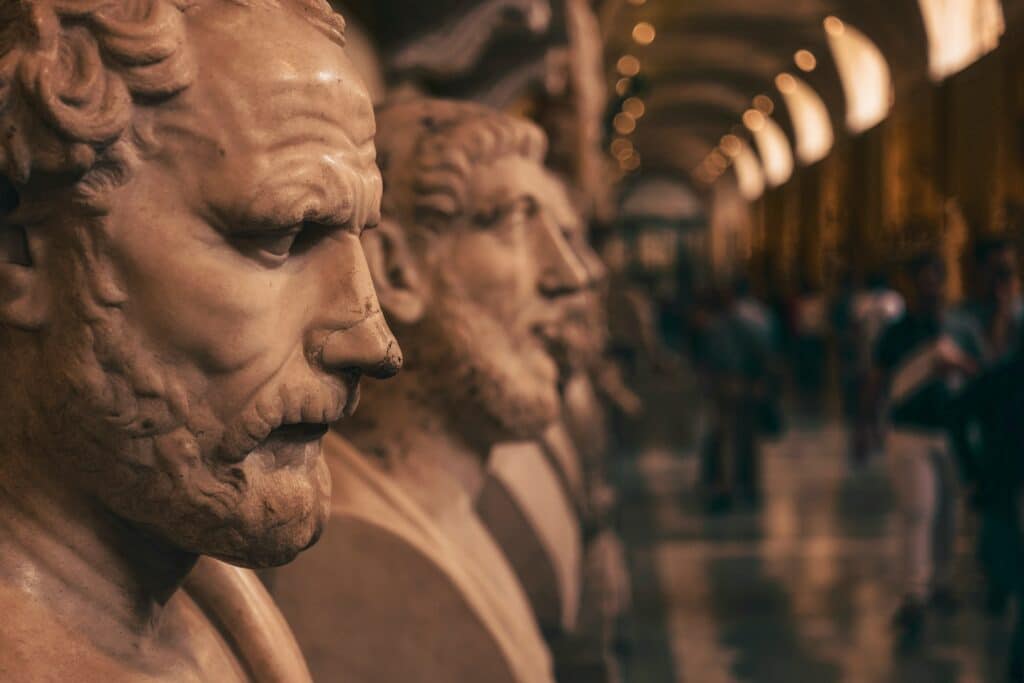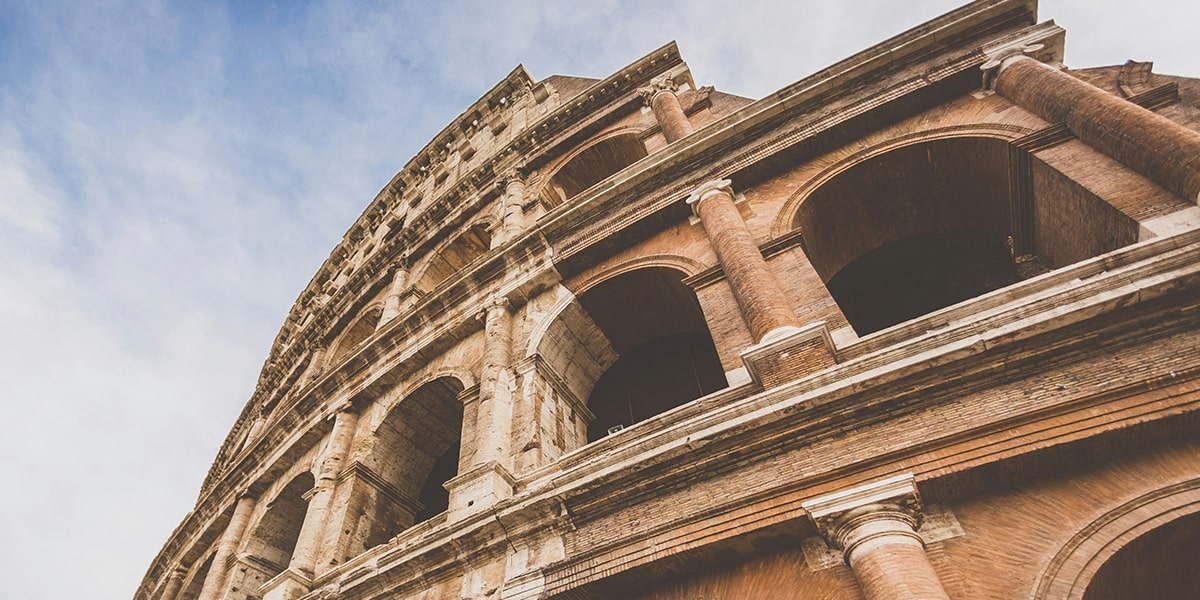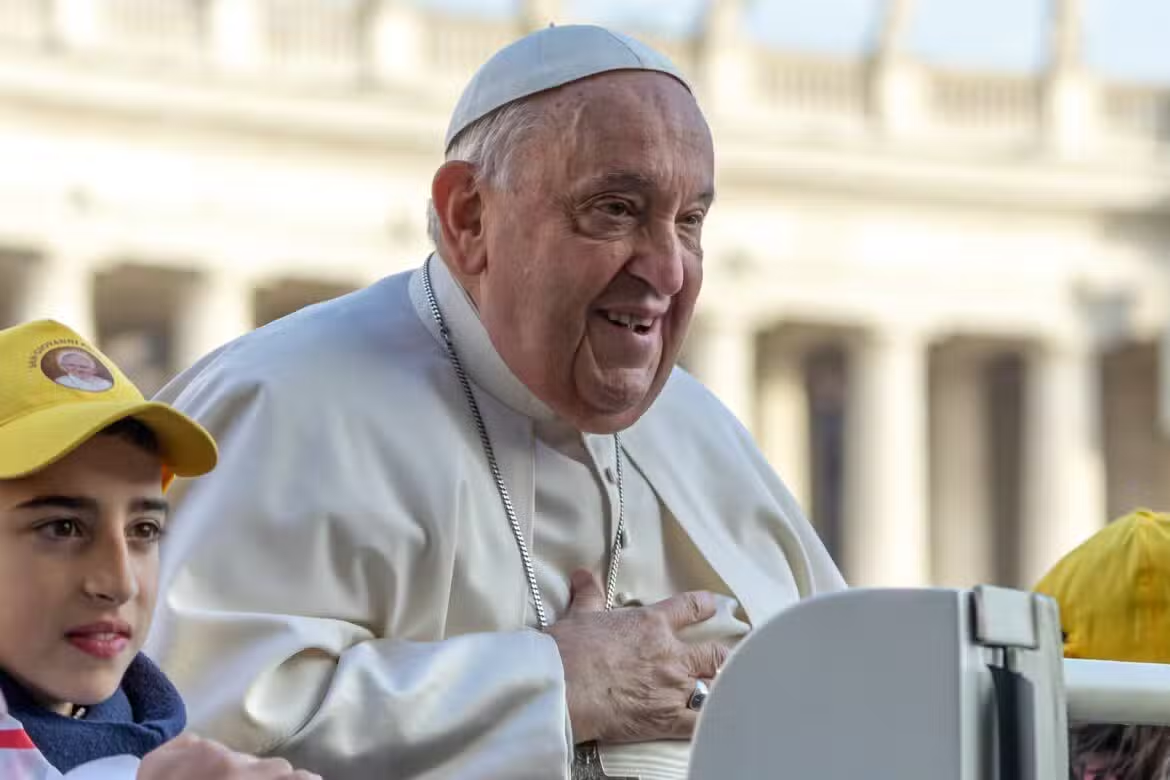This writer and historian looks at the ascension and descension of this once great empire.
After Theodosius the Great died in A.D. 395, the Western Roman Empire went into a death-spiral. The fifth century saw not a single great Roman emperor in the West. Instead, there was a succession of weak men who were emperors in name only.
The real powers behind the throne were generals and warlords, some of whom were half-Roman, half-barbarian. Huge swaths of territory were lost as various tribes marauded through the empire, meeting little or no military resistance. Generals and emperors were too busy fighting each other to protect their people.
Rome Falls and Rises
Amidst this depressing situation, the Church in the West was growing enormously in maturity. As the Roman Empire dissolved into chaos, its Church produced some of its greatest teachers and leaders of all time.
This was the Golden Age of the Latin Fathers—following Ambrose came the likes of Augustine and Jerome. These great men all spent time in Rome, but none of them served as Rome’s bishop.
In A.D. 440, a man became pope who would bring a new luster to the chair of Peter. Leo had been in Gaul on a diplomatic mission to help reconcile feuding generals when he received news of his election. That he had been entrusted with such a delicate task while yet a deacon speaks volumes about his extraordinary leadership ability.
It is from what he did and the way he taught that we form a picture of this man who, unlike Augustine, declined to write much about himself. We don’t know exactly when he was born, or the names of his parents, or how many siblings he had. In fact, we know few personal details about him, other than that he apparently was born in Rome.
Though he left behind 143 letters, all of them were written after he had assumed his office as bishop of Rome. And once he stepped into his office, he always spoke from the perspective of his office. He was very conscious of the weighty character of this responsibility; for him, the bishop of Rome was the successor of Peter. His letters, then, were not private correspondence with friends, but expressions of his Petrine role as teacher, father, and judge.
This does not mean that he was stuffy, pompous, or bureaucratic. In fact, that is precisely what Leo was not. He was simple, zealous, energetic, fatherly, and unaffected. Nonetheless, he always carried himself with the noble dignity of one who speaks with Peter’s voice.
After his resurrection, Jesus asked Peter three times to “feed my sheep” (John 21:15ff ). Thus, this became the first priority for this pastor of the Roman church, to break open the bread of God’s Word.
There were forty-four popes between Peter and Leo, but there are no surviving sermons from any of them. From Leo, we have preserved ninety-six homilies that are true gems. Take, for example, his homily on the occasion of the celebration of his own episcopal consecration.
One would think he would expound on his own dignity as successor of Peter. But he does the opposite—he uses the occasion to remind the people of their own dignity: For all, regenerated in Christ, are made kings by the sign of the cross; they are consecrated priests by the oil of the Holy Spirit, so that beyond the special service of our ministry as priests, all spiritual and mature Christians know that they are a royal race and are sharers in the office of the priesthood. For what is more king-like than to find yourself ruler over your body after having surrendered your soul to God? And what is more priestly than to promise the Lord a pure conscience and to offer him in love unblemished victims on the altar of one’s heart?

This was the Golden Age of the
Latin Fathers—following Ambrose
came the likes of Augustine and Jerome.
These great men all spent time in Rome,
but none of them served as Rome’s bishop.
Since, year after year, Leo preached on the feasts of the liturgical calendar, his ninety-six homilies cover the sadness of Good Friday and the glory of Easter, the Sermon on the Mount and the parables. But his words are most resplendent when they celebrate the wonder of Christmas. This excerpt is from one of many powerful sermons celebrating Christ’s birth: Dearly beloved, today our Savior is born; let us rejoice. Sadness should have no place on the birthday of life. The fear of death has been swallowed up; life brings us joy with the promise of eternal happiness. No one is shut out from this joy; all share the same reason for rejoicing. Our Lord, victor over sin and death, finding no man free from sin, came to free us all. Let the saint rejoice as he sees the palm of victory at hand. Let the sinner be glad as he receives the offer of forgiveness. Let the pagan take courage as he is summoned to life….
And so at the birth of our Lord the angels sing in joy: Glory to God in the highest, and they proclaim peace to men of good will as they see the heavenly Jerusalem being built from all the nations of the world. When the angels on high are so exultant at this marvelous work of God’s goodness, what joy should it not bring to the lowly hearts of men?… Christian, remember your dignity, and now that you share in God’s own nature, do not return by sin to your former base condition.
Bear in mind who is your head and of whose body you are a member. Do not forget that you have been rescued from the power of darkness and brought into the light of God’s kingdom. Through the sacrament of baptism you have become a temple of the Holy Spirit. Do not drive away so great a guest by evil conduct and become again a slave to the devil, for your liberty was bought by the blood of Christ.
Controversy in the East
While Leo was still a deacon, trouble broke out in the Eastern capital that would eventually land on his doorstep. In A.D. 428, Constantinople had gotten a new patriarch named Nestorius, a former monk from Antioch who came to Constantinople accompanied by several of his monks and priests.
One day, while preaching a sermon in the cathedral, one of Nestorius’s priests proclaimed from the pulpit that the Blessed Virgin Mary should not be called Theotokos (the God-bearer or Mother of God). The people did not understand the explanation the preacher gave for this; all they knew is that they had been paying homage to Mary under that title for centuries; they were outraged, as people are when their mother is slighted.
They expected the patriarch to correct the priest. Instead, Nestorius not only affirmed the priest’s teaching, he widened the controversy by sending out pamphlets saying that Mary should not be called the “Mother of God” but rather the “Mother of Christ.” He so sharply distinguished between the human and divine natures of Christ that his explanation made them appear to be only loosely conjoined. He made it sound as though Christ were a split personality, as if God were dwelling within the man Jesus much like he would in a temple.
Whatever Nestorius meant, he had violated a principle invoked by many Fathers up to that point—lex orandi, lex credendi. In other words, the liturgy of the Church is evidence of what the Church believes. Origen, Athansius, and Cyril of Jerusalem, to name a few, had called Mary Theotokos. The oldest surviving written evidence of a prayer directed to Mary addresses her by this title in the third century.
Gregory Nazianzen, predecessor of Nestorius fifty years earlier, had this to say regarding the serious issues involved in according or denying Mary this title: “If anyone does not believe that Saint Mary is the Mother of God (Theotokos), he is severed from the Godhead.”
The patriarch of Alexandria, Cyril, saw that what was at stake here was not principally Marian devotion, but proper understanding of the humanity and divinity of Christ. From the moment of his conception, the divine Word intimately united himself with a full human nature so that Jesus of Nazareth was indeed the divine Word made flesh. If he is God, then quite simply it is proper to call Mary the “Mother of God.”
Essentially, the title of Theotokos applied to Mary was simply a function of the Church’s faith as professed at Nicaea. To deny it, then, was to deny Nicaea. A council called by the emperor to clarify this matter met at Ephesus in A.D. 431. It reaffirmed Mary as Theotokos thus, according to the intent of the council fathers, reaffirming Nicaea.
But as often happens after a council, controversy continued. A monk named Eutyches alarmed people by teaching that Christ, after the incarnation, had only one nature and that his body was not consubstantial with ours. Pope Leo was notified of the problem by letter, and he responded quickly and decisively.
His profound meditation on the incarnation, expressed in his homilies, helped him draft a short but poignant theological treatise intended to express the Church’s faith in Christ’s complete humanity and divinity and how the two are related. This letter, commonly called the Tome of Leo, was carried to a council that was called by the emperor in A.D. 449.
Unfortunately, the powerful supporters of Eutyches had thoroughly rigged this council, even using force to make the bishops endorse the theology of Eutyches. The Tome of Leo was not even allowed to be read at the council. Leo promptly invalidated the whole affair, calling it the Latrocinium, or the “Robber Council.” The emperor supporting Eutyches died and his successor called a new council intended to be truly ecumenical. This new council that assembled in the city of Chalcedon included over four hundred bishops from all parts of the empire, papal legates included.
In an effort to express the Church’s Christological faith in a way that would win the allegiance of the bishops and people of both East and West, Leo’s Tome was read. Here are a few salient words from the document:
The proper character of both natures was maintained and came together in a single person. Lowliness was taken up by majesty, weakness by strength, mortality by eternity. To pay off the debt of our state, invulnerable nature was united to a nature that could suffer; so that in a way that corresponded to the remedies we needed, one and the same mediator between God and humanity the man Christ Jesus, could both on the one hand die and on the other be incapable of death. Thus was true God born in the undiminished and perfect nature of a true man, complete in what is his and complete in what is ours.
An Eastern bishop stood up at the conclusion and shouted: “Peter has spoken through the mouth of Leo!” There was widespread enthusiasm among the council fathers for Leo’s eloquent explanation.
While the final conciliar definition of faith also owed a great deal to the late Cyril of Alexandria, Leo’s intervention had proved decisive, cementing the importance of the teaching role of the bishop of Rome for both East and West.
This was adapted from When the Church Was Young.









5 thoughts on “The Catholic Church and the Fall of the Roman Empire”
There were bishops elected before St Leo. Also Jesus was already believed to be God by this point in church history. Go read about the council of Nicaea. Your the heretic here! Also most scholars believe that the book of revelation may refer to pagan Rome as Great Babylon and Emperor Nero as Antichrist. You need to learn your church history.
Ahhh, you see yourself as greater, do you? It is not charitable at all for you to call the author a heretic. He is merely telling the historical facts. It seems you did not understand what the author wrote. He was addressing the very real heresy of Nestorianism. This is not a debated issue at all. You seem to want to be divisive and quarrelsome. Both are sinful. Just from what you have written here, it seems like you would not be able to mount a serious critique of the author’s words. Perhaps you should try, and then we will see if you have more substance than what you showed in your little pipe bomb of fragmented prose!
Well written.
History with facts like what I just read is enriching people who are hungry like me. He was Word, He was with God, He was God, He is a Light. The Word became flesh and made His dwelling among us.
I’ve read here. a history unbeknownst before me, that rings true, as I understand it. The church and its history is as complicated as the men and politics that created it!
What is my faith, when so many voices speak so loudly about truth?? All I hear is the confusion that brought us here. So I listen to hear that quiet voice, the holy spirit, that speaks softly, to reinforce my faith in the unknowing.